Explore DesignShifts
Here, you’ll find the DesignShifts we’re exploring both in theory and in practice. Each topic explores Shifting the posture, power, perspective, practice, and the purpose of design.
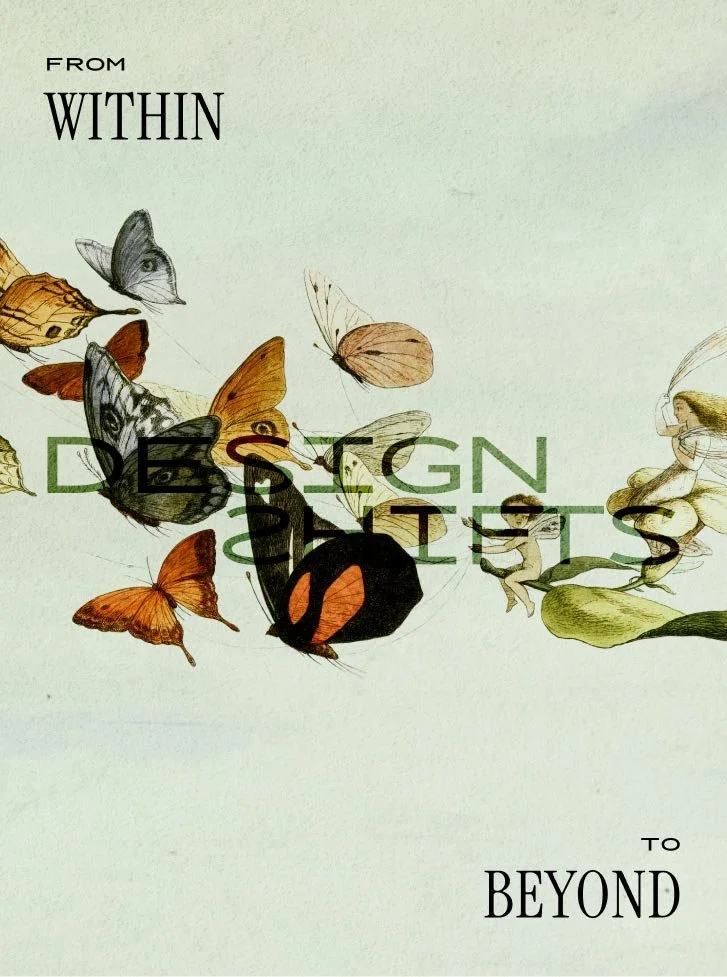
DesignShift: Shifting Within and Shifting Beyond
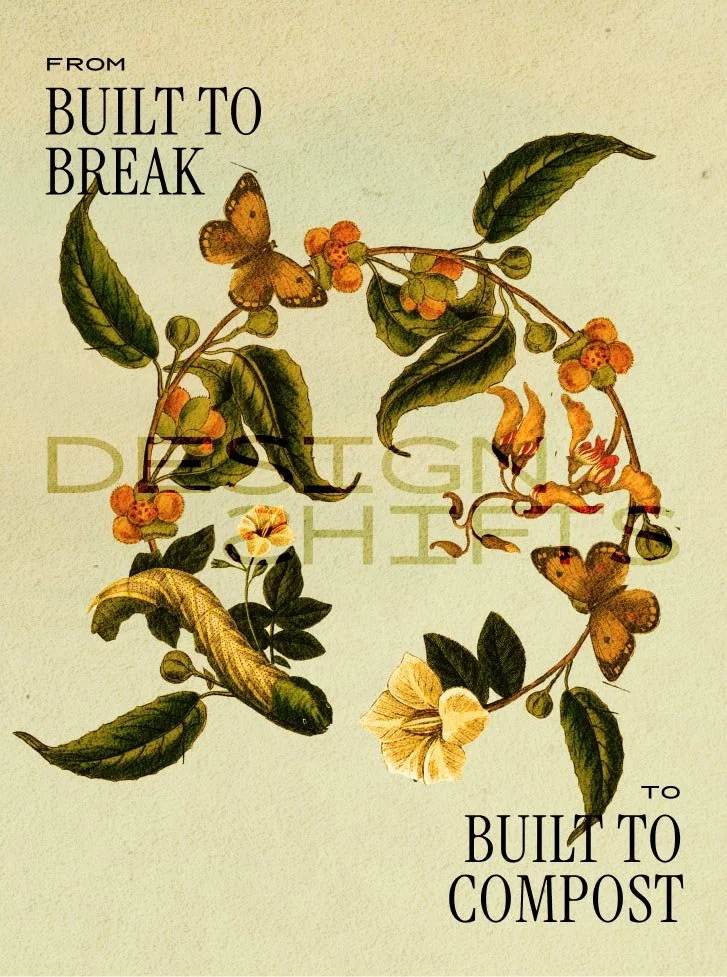
DesignShift: From Built to Break to Built to Compost
How did we go from building cathedrals to building trash? When did "built to break" become our business model?
Our great-grandparents built houses that stood for centuries and tools that outlived their makers. Today, the average smartphone dies in two years, fast fashion dissolves after a dozen wears, and appliances break the day after their warranty expires.
We live on a planet drowning in our creations, yet we can't stop creating. Every factory churns, every 3D printer hums, every assembly line rolls forward, adding to a world already choking on abundance. The old answer was built to last: make it once, use it forever. The current answer is built to break: make it cheap, toss it quick: planned obsolescence. When "disposable" stopped being a convenience and became a catastrophe, neither approach worked for a finite earth with infinite appetite.
So what if the future of making isn't about lasting longer or breaking faster, but about returning home? hashtag#DesignShift: from build to break to built to compost.
What if we started designing like nature does—where nothing is waste, everything feeds something else, and the end of one thing becomes the beginning of another? We can keep creating, but only if what we create knows how to die well. Built to compost means built to complete the circle, to honor the cycles that sustain life itself.
In a world that doesn't need more things, maybe we need things that know when to become something else entirely.

DesignShift: From Architects of Distraction to Stewards of Attention
The world is on fire, and our interfaces are still asking people to “swipe to buy.”
For decades, we, designers have been the architects of distraction. We've optimized for convenience, for frictionless experiences, for the path of least resistance. “Good design,” we’ve said, “doesn’t make you think.”
But in an age of interconnected crises—ecological collapse, social fragmentation, and spiritual emptiness—we must ask ourselves:
What if the ease we've designed for has made it too easy to ignore what demands our attention?
What if the design we've celebrated has accelerated our collective crisis?
What if the metrics we've optimized for have measured everything except what truly matters?
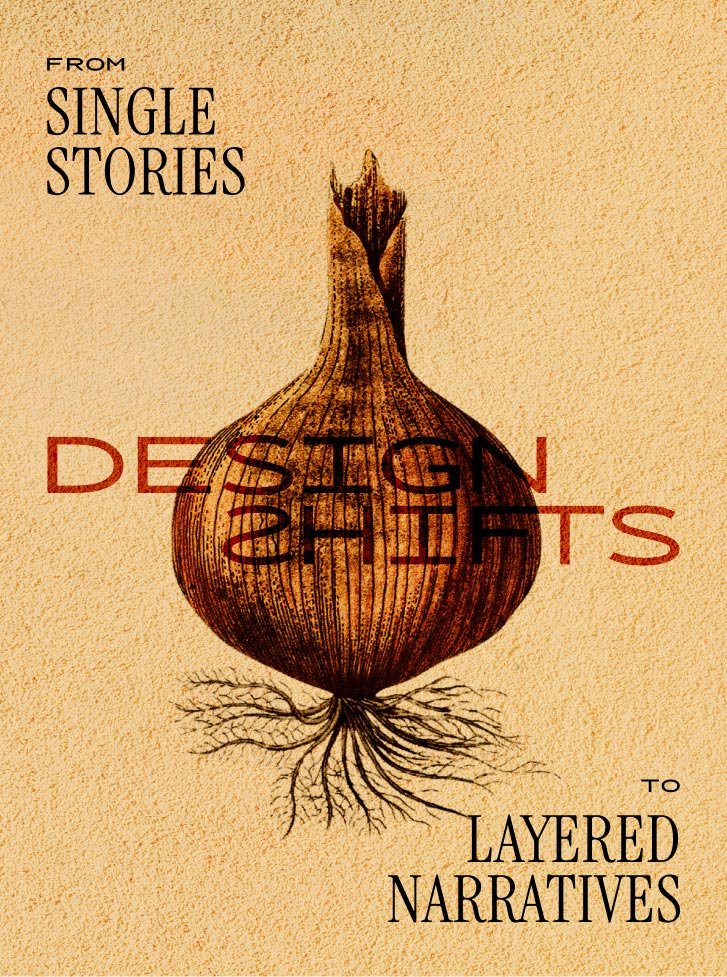
DesignShift: From Single Stories to Layered Narratives
Humans (and organizations) are not simple, targeted, linear, or one-dimensional. We're layered, complex, confusing, and our depth and breadth shouldn't be confined to a one-minute elevator ride. Yet, we live in a world obsessed with packaging people into consumable niches, push out short-form content, and make up our minds based on simplified stereotypes.
In design, this shows up in the way we craft personas, design simple icons, or try to summarize things on simple post-it notes, we often simplify narratives to a point where they become useless or even harmful.
DesignShift: How can we shift design practices away from reductive single stories toward more nuanced, layered narratives?
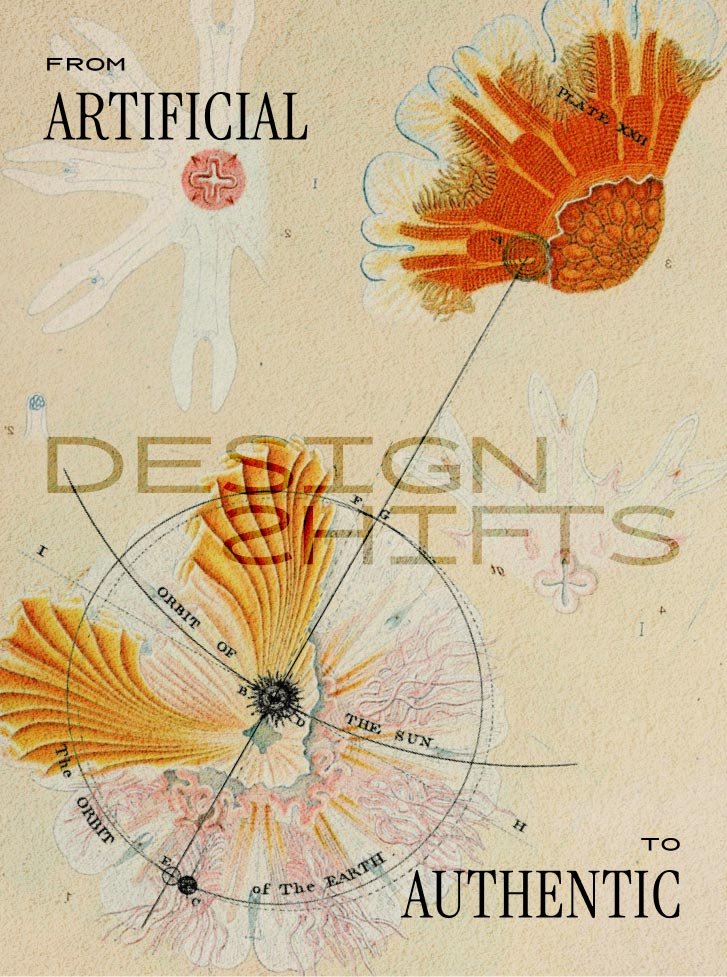
DesignShift: From Artificial to Authentic
I pasted an Oscar Wilde quote into Notion the other day. As soon as I did, the Ai symbol popped up with the “improve writing” suggestion.
I didn’t click it, but it made me think…If Oscar Wilde was alive today, would he too have been lured to change his words with Ai? Would he have trusted Ai more than his creative intuition?
Ai would most likely have edited Wilde's voice and words by removing “unnecessary” words and simplifying sentences. But would it have been an improvement? If his work is no longer in his voice, how can we say it’s better?
DesignShift: from artificial to authentic
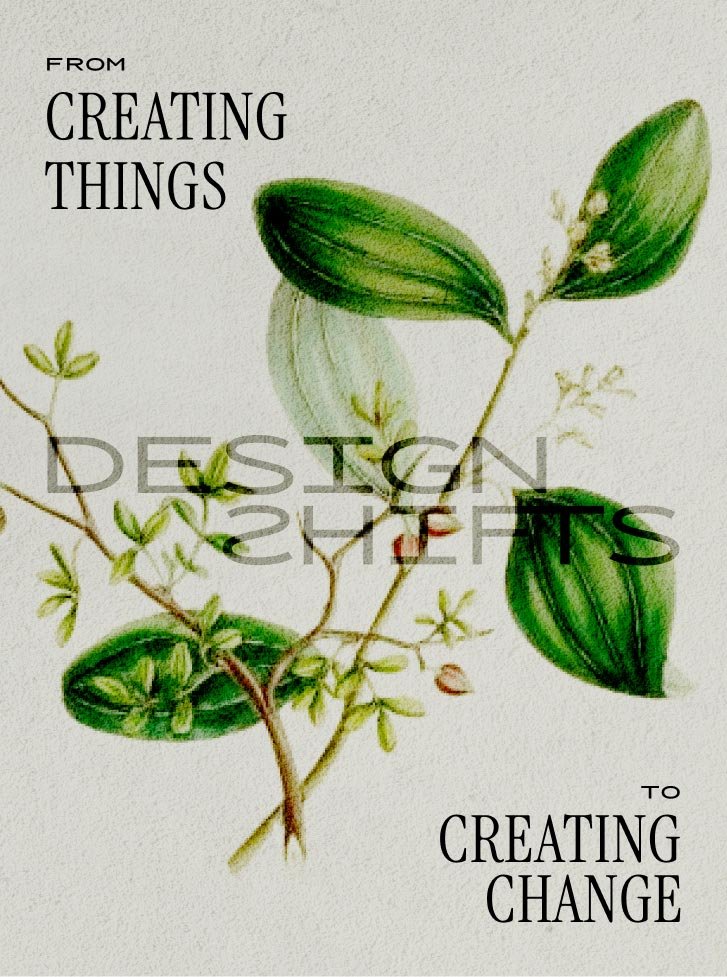
DesignShift: From Creating Things to Creating Change
What is the role of designers in a world that does not need more things? Our work is evolving and as we face climate and social breakdown, and we must take the time to evaluate our profession and purpose. How can we make sure that our work does not contribute negatively to an already hurting planet? How can we shift our focus from creating things to creating change?
DesignShift: from creating things to creating change.
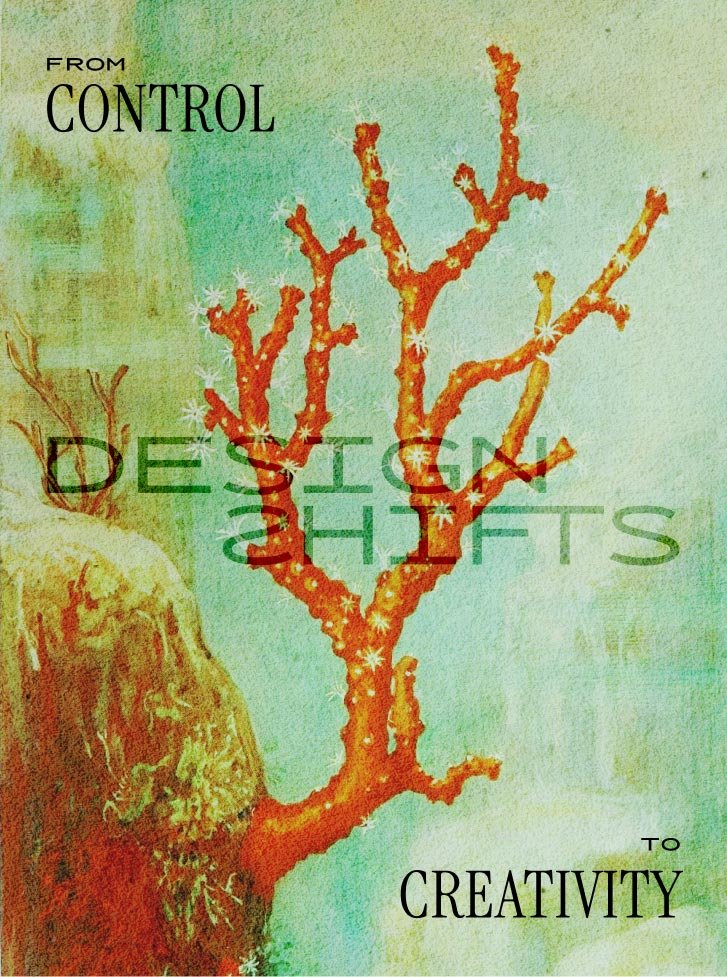
DesignShift: From Control to Creativity
I know I am not alone when I say that 2025 has already felt like an entire year compressed into two months. A relentless stream of new political narratives and policies threaten human rights. AI tools emerge at a dizzying pace, promising efficiency while simultaneously jeopardizing jobs. Layoffs are rampant, grocery prices continue to soar.
Uncertainty feels like the only constant. How do we bring back control?
In the slow study course We Will Dance With Mountains: VUNJA! Bayo Akomolafe says: “We are living in a time of blurred boundaries, broken binaries, and beleaguered borders. A time of Al, coups, climate chaos, cancellation myths, declining trust, and frightening heat. We will have to think within the storm, within the tensions, within the ripples. There's no place to stand; the world is moving, and we must move with it.”
His quote made me realize that if we want to try to navigate a world that feels frightening and uncertain, we have to let go of control and lean into creativity.
DesignShift: From control to creativity

DesignShift: From Play to Win to Play to Play
“We're not playing to win, we're playing to play. And ultimately, playing is fun. Perfectionism gets in the way of fun. A more skillful goal might be to find comfort in the process.”
- Rick Ruben
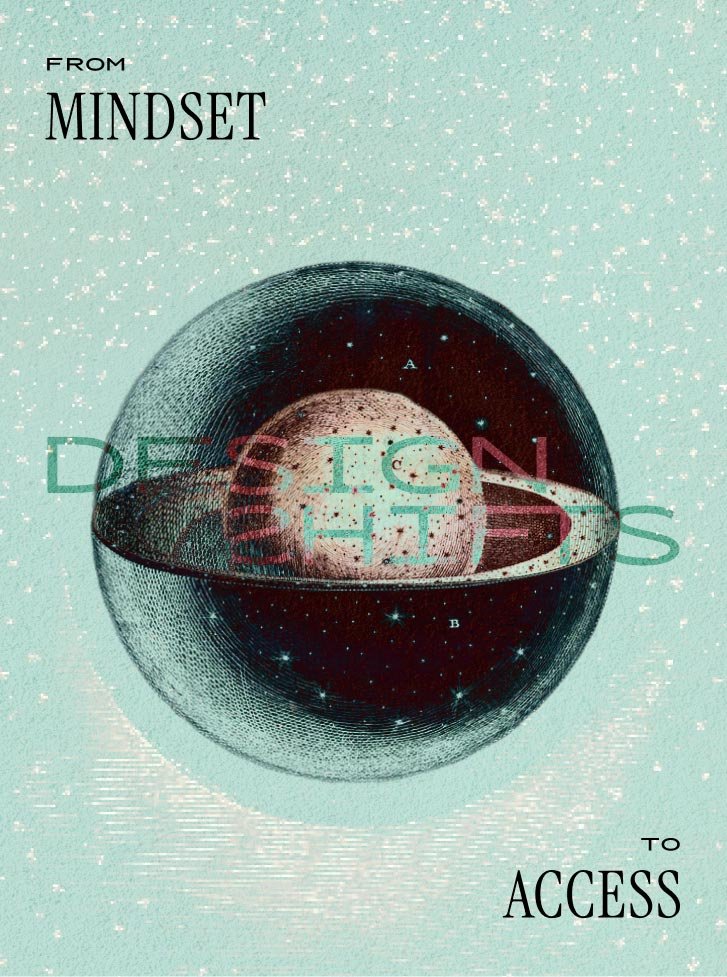
DesignShift: From Mindset to Access
How do we design sustainable change? We focus less on mindset and more on access. We’re told that if we push ourselves, develop courage, and become disciplined we’ll get that promotion, land that job, or achieve the perfect body. However, success or behavior change is less about mindset and more about access. Access to the right conditions. Access to the right relationships. Access to money.
DesignShift: From Mindset to Access.
Rather than telling people to recycle, what if we make recycling easier? Rather than telling people to eat healthy, what if we give people access to affordable and healthy food? Rather than telling people to walk more, what if we create pedestrian friendly cities? Rather than telling people what to do, what if we created the conditions where doing the right thing is easy? Removing barriers. Opening doors. That is how we design sustainable change.
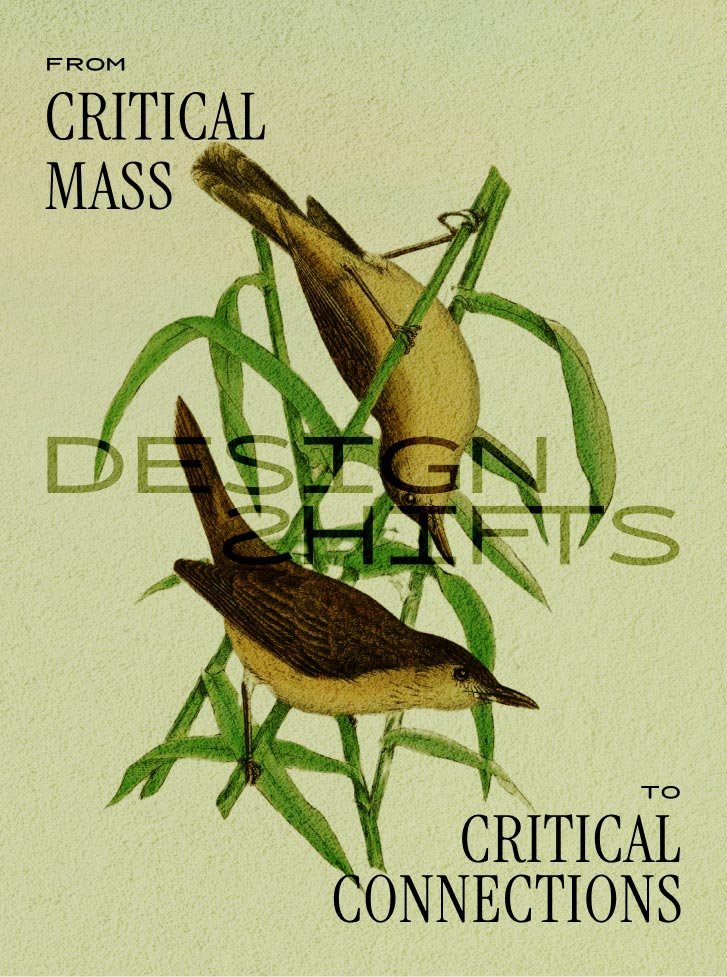
DesignShift: From Critical Mass to Critical Connections
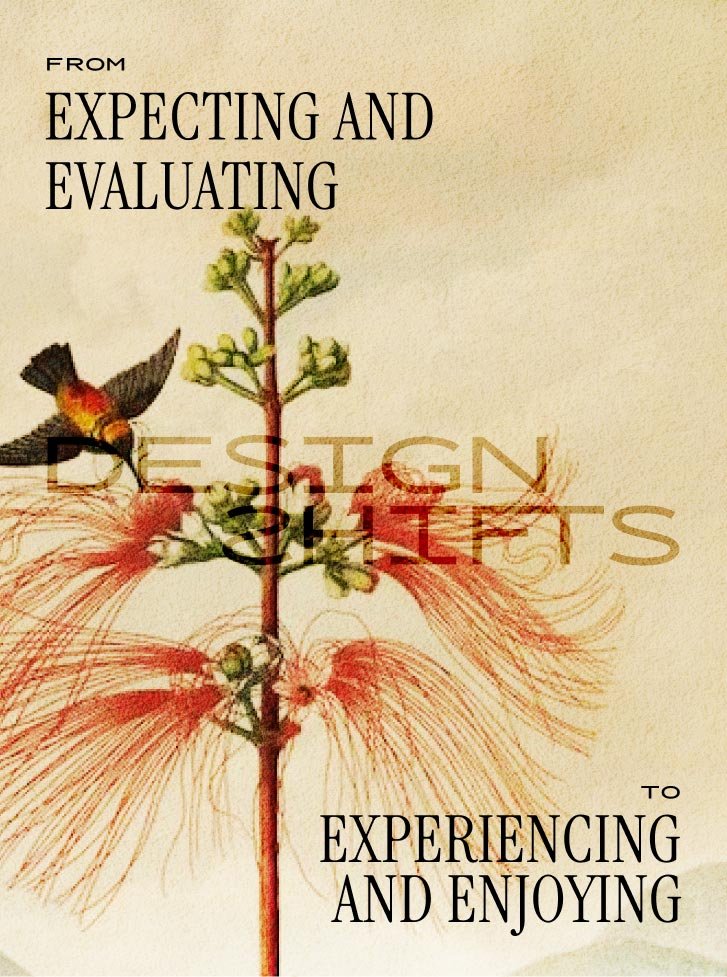
DesignShift: From Expecting And Evaluating to Experiencing And Enjoying
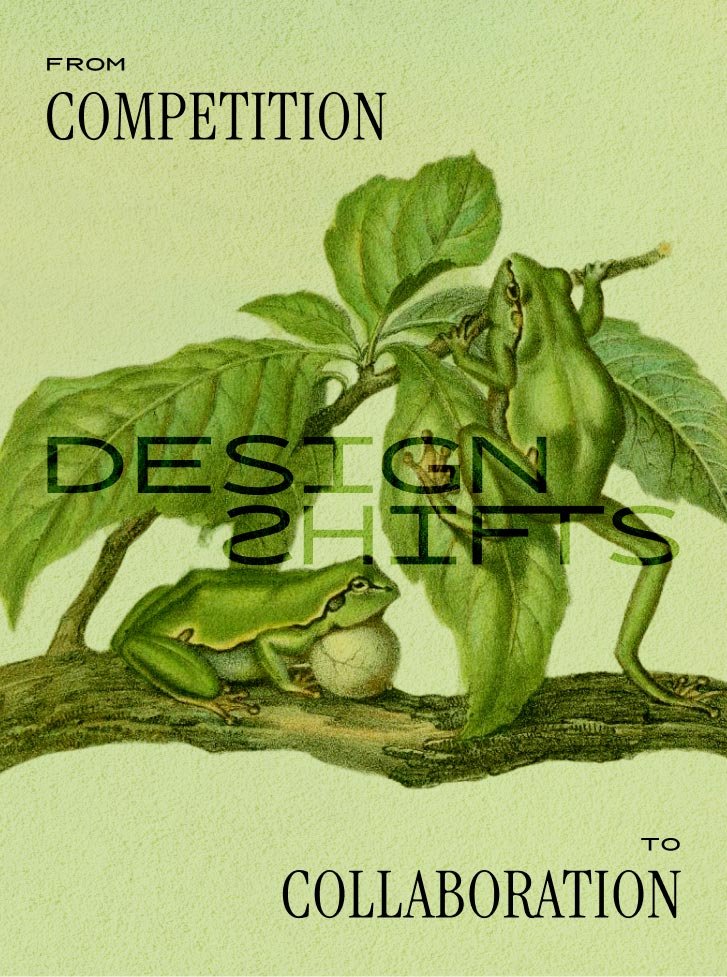
DesignShift: From Competition to Collaboration
Working on solutions in the social impact or climate space can feel lonely and frustrating. We’re working within a system rooted in extraction and competition. A system whose very survival depends on things staying the same. However, designing a better tomorrow require us to Shift from competition to collaboration.
Shifting the future for and through design require us to share space, resources, struggles, hopes, and future visions together.

DesignShift: From Solving For Symptoms to Changing Systems
“To expect ourselves to change without changing the environment in a dopamine overloaded world is to expect ourselves not to be human.”
Recently I listened to the podcast "The Path to Enough" where the Psychiatrist Anna Lembke discussed the addictive nature of our devices and how our behaviors are influenced by the environment we find ourselves in. As a designer passionate about designing for real human needs, this quote hit home for me.
DesignShift: What if… rather than solving for individual symptoms, we started changing the system that is actually holding us back? What if we designed environments are actually conducive to being human?
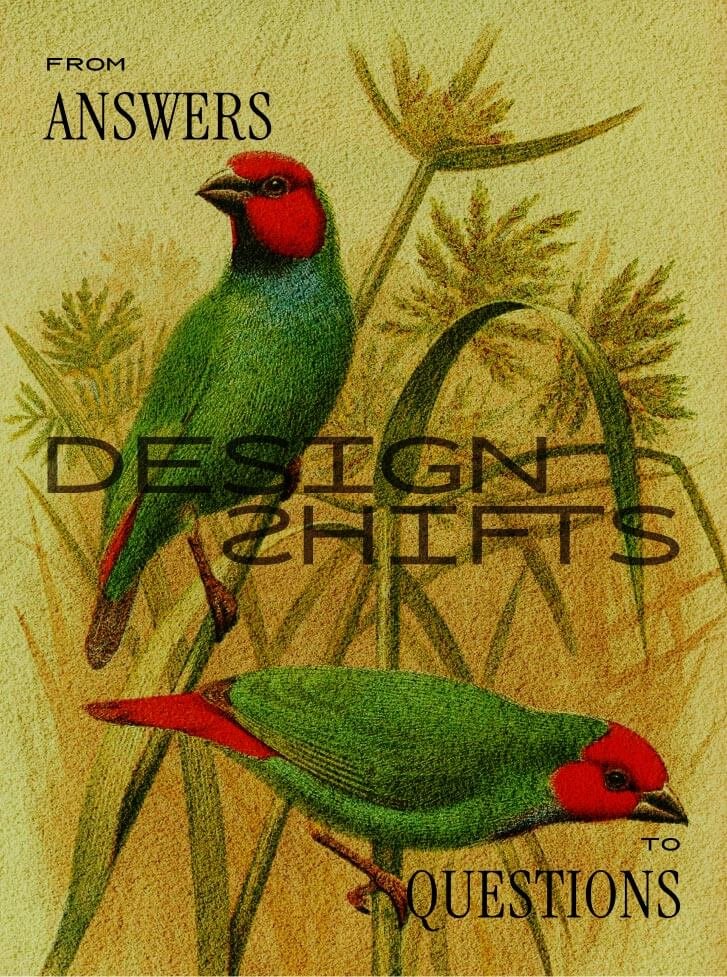
DesignShift: From Answers to Questions
How many times have you been in a conversation that’s started with a question, and ended with: “Huh, I don’t know the answer. Let me Google that (or ask ChatGPT).” We grab our phones. Find AN answer. And feeling like we’ve gotten what we needed, it’s the end of the discussion. Next topic. Moving on. The internet has given us so much when it comes to access to information. Answers to nearly every question we could ever imagine are at our fingertips.
However, lately I’ve started to realize that the thing we need is not answers, but rather opportunities to be with the questions.
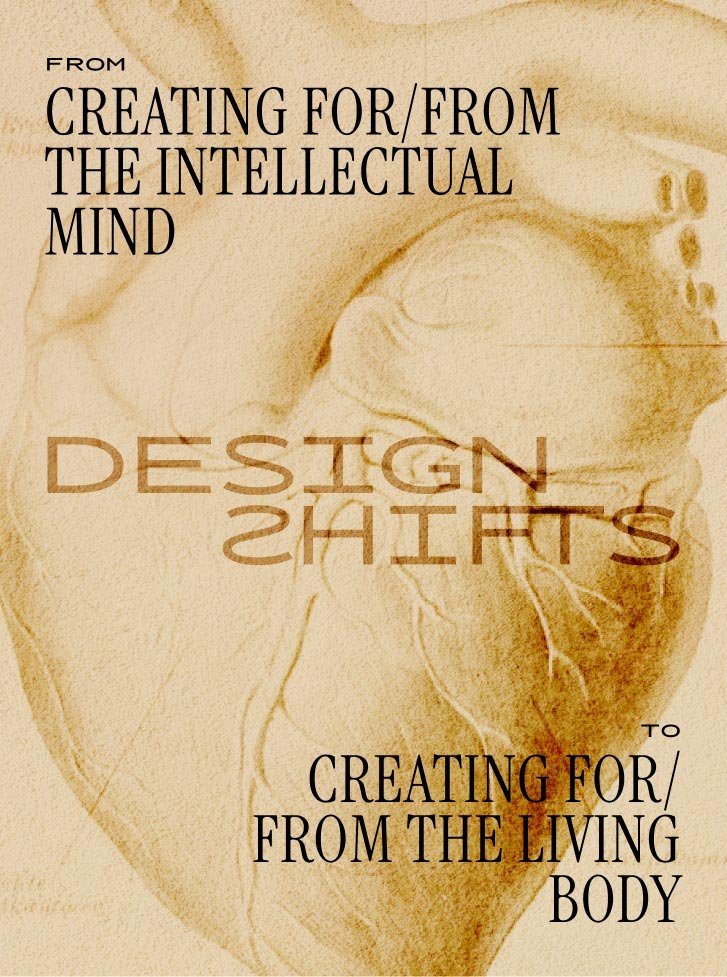
DesignShift: From Creating For/From The Intellectual Mind to Creating For/From The Living body
Good design should be about creating multi-sensory experiences. However, today, as designers are asked to prove their worth through spreadsheets and numbers, our work is often reduced to what can be shown or explained using rational thinking.
It seems like we’ve forgotten what it means to engage with the parts of our bodies that can’t be seen on a Zoom call. It seems like we’ve forgotten that feelings that live in our bodies are central to how we engage with the world and other people.
DesignShift: From creating for/from the intellectual mind to creating for/from the living body.
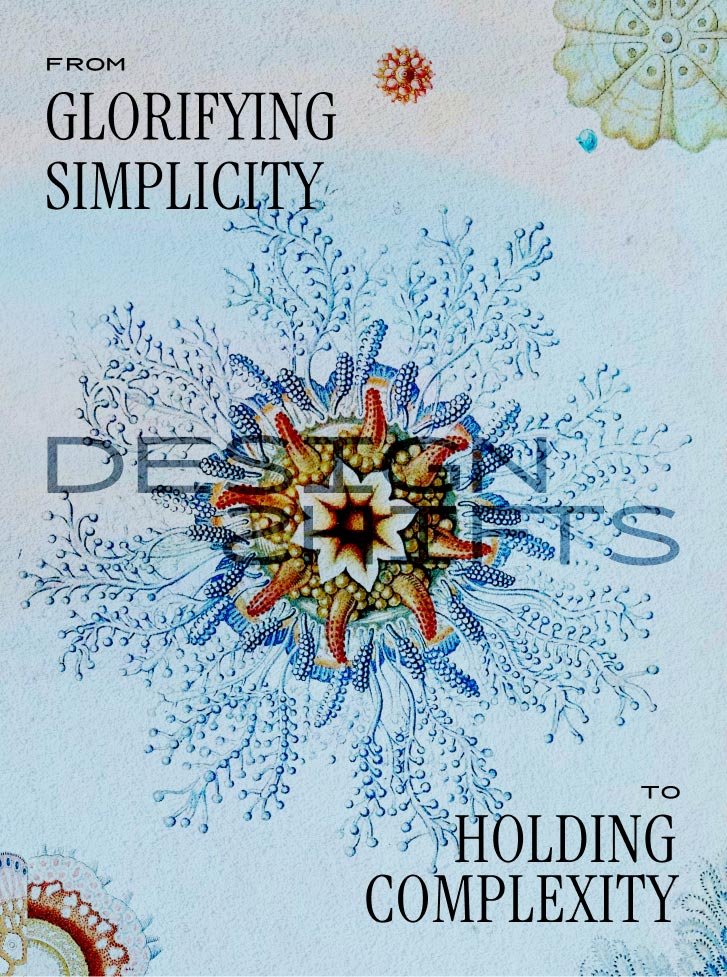
DesignShift: From Glorifying Simplicity to Holding Complexity
If we want to move from designing things to designing change, rather than simplifying the complex, we must find ways to hold and be with the complexity that exists around us and inside of us. Rather than rushing to fix, solve, or clean up, we must embrace contradictions and tensions as essential parts of the design process.
DesignShift: From Glorifying Simplicity to Holding Complexity.

DesignShift: From Commerce to Care
What would it look like to Shift the practice and purpose of design away from commerce and commodities towards care and community?
This question is at the heart of many of the DesignShifts I’m exploring. Much of design today is in service of commerce. We create or improve things in order to sell more of them. In the world of commerce, everything — even our water, land, emotions — are turned into commodities that can be bought and sold with the help of design.
While this is the reality in a capitalist society, I can’t help but wonder what it would look like to Shift of focus away from commerce and commodification towards care and community.
DesignShift: What if... our work was in service of communities flourishing rather than company growth? What if... we could put genuine, non-transactional care at the center of our practices, purpose, and processes? What if... we could move design away from private interests towards public good?
We need new ways for design to be of service to the greater good. We need to dream beyond the question “but who is gonna pay for it” and imagine a world where everything that makes life worth living can’t be bought and sold. And as Arturo Escobar said in Designs for the Pluriverse, We need designers to “walk hand in hand with those who are protecting and redefining well-being, life projects, territories, local economies, and communities worldwide.”

DesignShift: From Reactive to Rooted
As designers, how do we stay rooted in an industry that is always changing? It’s estimated that 90% of the world's data was generated in the last two years alone. With a constant stream of “new” information, trends quickly become truths as we try to design what’s new and what’s n
When algorithms and that internal voice tell us to read, respond, and engage with everything, how do we let go of reactivity and become rooted in the things that matter?
DesignShift: From Reactive to Rooted.
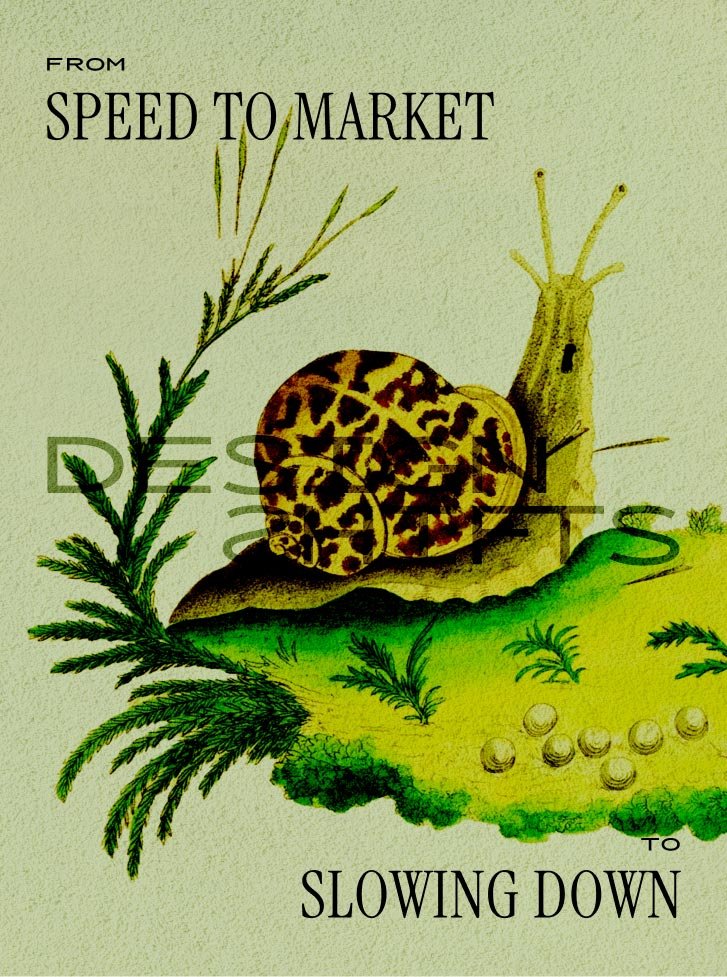
DesignShift: From Speed to Market to Slowing Down
What can we gain from 🐌slow? That is a question I’ve been asking myself as I’ve taken some time to slow down. For so many years, I was moving at the speed of the industry. Always pushing myself to do a little more, try a little harder, and create a little more. This chase for more made me feel less. Less happy with the work I was doing. Less motivated to create change. Less able to dream about a better future. Guided by the speed of the market, the love I felt for design faded. Creativity lost its magic. And everything started to feel like a task to be completed, rather than an experience to be enjoyed.
Through slowness, I’ve been able to rebuild, recenter, and respark my love for design and social impact. In moments of slowness, I’ve started to see things clearer and feel things more deeply. I’ve experienced what slow feels like when designing my own life. Now, I want to explore what slow can mean for the practice of design.
DesignShift: From speed to market to slowing down.
🐌What would it look like to shift the focus from designing for the speed of the market to designing for the speed of trust, nature, and our hearts and minds?
🐌What does slow design look like? What would it mean for our processes, our outputs, our teams?
🐌What would it look like to design not for the next quarter of a year, but for the next quarter of a century?
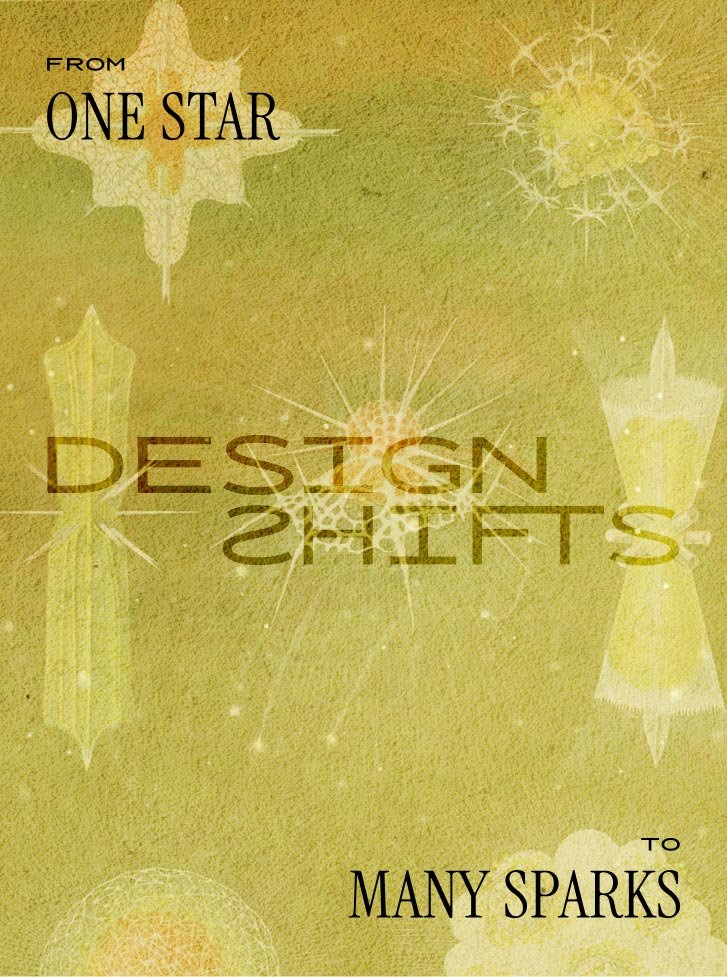
DesignShift: From One Star to Many Sparks
What if… instead of centering our organizations around single stars that cast a shadow on everyone else, we created environments where many sparks together could light up the whole room?
In the book, Emergent Strategy, adrienne maree brown (amb) writes about how many of the organizations working for social change rely on one single charismatic leader. It's the rock star who is put on a pedestal and expected to solve all our problems.
The idea of a single rock star doesn’t just show up in social change organizations. Presidents, sports stars, celebrities, CEOs… all positioned as the ones who will create a better country, company, or community for all of us. It’s the water we swim in and the ripples are pervasive.
The single rock star narrative doesn’t just create a power imbalance. It also creates an environment where according to amb “Rock stars get isolated, lose touch with our vulnerability, are expected to pull off superhero work, and generally burn out within a decade.” It creates a weak system that stands or falls (which it sooner or later does) on the shoulders of one person.
DesignShift 12: from one star to many sparks.
The best missions won’t be illuminated without a depth of knowledge and a breath of people. Through distribution we can create a sustained light that illuminates every corner, not just the corner offices.
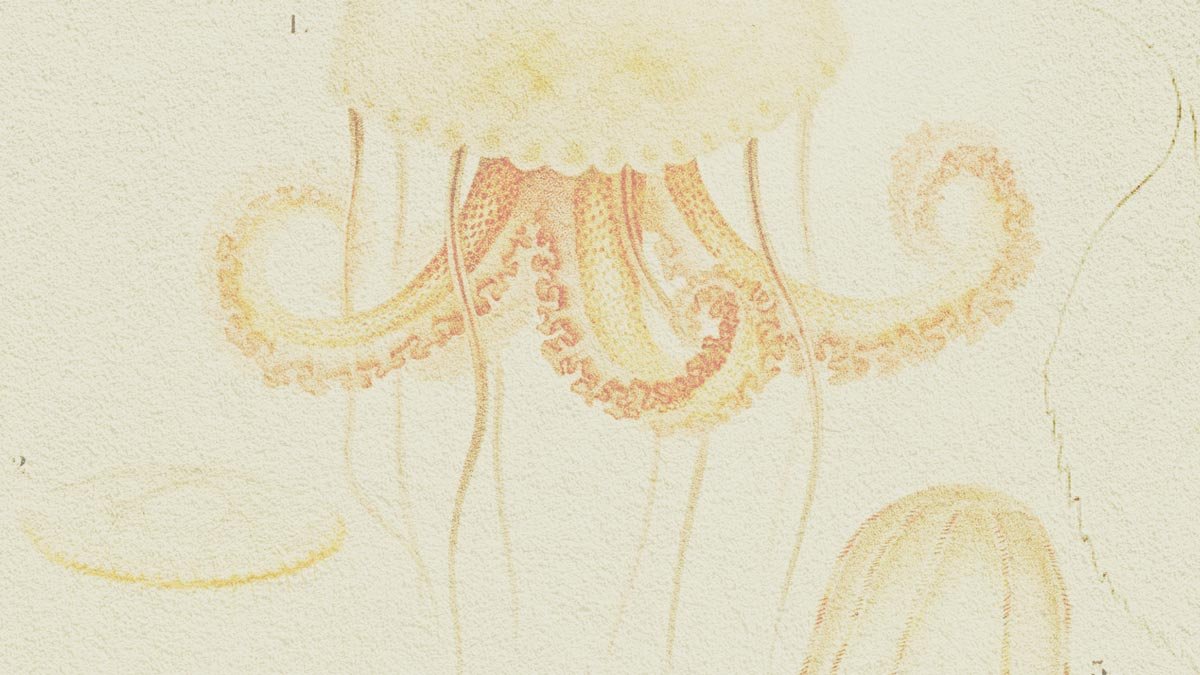
Join us!
Sign up for updates on my writing, events, and upcoming courses
